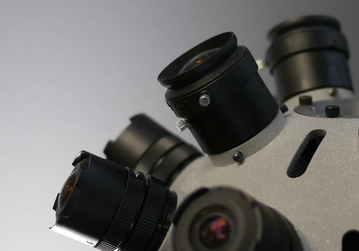Standard Equipment for the Future News Crew?

Samsung didn’t provide pricing or availability details for the camera, and the device is likely to undergo further development before being officially launched. However, it’s a step forward for Samsung in establishing its virtual reality (VR) ecosystem, and ties together its VR headsets, smartphones, tablets and televisions. Virtual reality could emerge as an important element of the home entertainment milieu. The company announced that its first virtual reality headset, the Gear VR Innovator Edition, would be available in early December in the US, providing developers something to work with. The device was made together with Facebook’s Oculus Rift, and developers can now register for access to the Oculus Mobile SDK for the headset.
Samsung isn’t the first company to show off a camera built for VR capture. Jaunt VR, a California-based start-up, has been developing its own virtual reality ecosystem including 360-degree cameras intended for use by filmmakers and news crews. Jaunt’s cameras are also capable of capturing 360-degree sound. The company has big ambitions of becoming an important player in the future of cinema, and the company’s pedigree does stand out: Jaunt’s staff includes experienced software, hardware and broadcasting talent. It’s certainly a company to watch in 2015.
The app to kick-start virtual reality was supposed to be games, but interest from film makers, broadcasters, the military and even real estate agents could drive VR forward further and faster than previously thought. Some news events are already being captured by VR cameras, creating footage that will certainly look quaint to future generations of content consumers.
A number of applications in enterprise are being addressed, including advanced immersive communications, remote site walk-throughs, map-making, security and field training. The 360-degree cameras from Samsung and Jaunt aren’t yet consumer-electronics products, but are likely to become an important part of the VR ecosystem. They’ll first come to market as high-end equipment, but the trickled-down effect will kick in after a few years. Home security monitors, webcams and GoPro-like devices could be VR-capture enabled within five years.
As the excitement about Google Glass fades, enthusiasm is building for virtual reality. VR headsets like those from Sony and Samsung are bulky, socially bizarre wearable devices, but the usage scenarios are very different and these aren’t yet worn in public. However, potential users might get past the awkwardness as quality VR content becomes available to them. The killer app for live VR entertainment could be a killer event — the 2018 FIFA World Cup, perhaps — and change the way live video content is consumed. It could be something to look forward to.

 Twitter
Twitter
 Facebook
Facebook
 LinkedIn
LinkedIn
 Email
Email